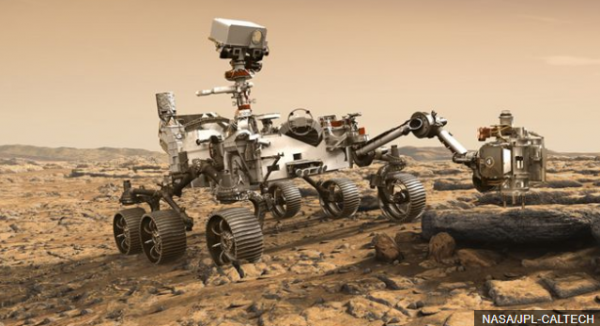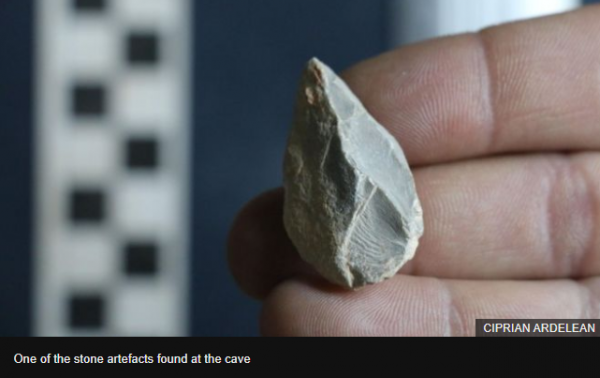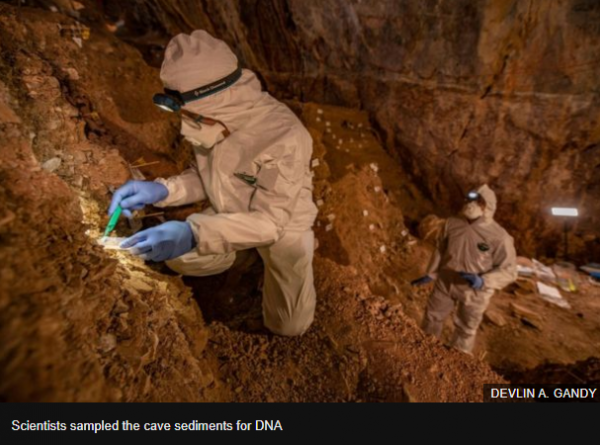-
Posts
20,851 -
Joined
-
Last visited
-
Days Won
49
Everything posted by CaaC (John)
-
Edit: Deleted - Posted in the wrong Forum Re-posted in the Mission to Mars thread
- 1,657 replies
-
- space exploration
- astronomy
-
(and 1 more)
Tagged with:
-
Indigenous Australians had their languages taken from them, and it's still causing issues today CNN -"I'm Fanny Smith. I was born on Flinders Island. I'm the last of the Tasmanians." The audio is scratchy and distorted, sounding at times like it is being spoken through a wall. Yet the voice speaking is high and proud, with long, stretched syllables in English. When she breaks into song, in her native language, it is half chant, half bluesy-spiritual. Smith was born on the Australian island of Tasmania, in December 1834, to the Palawa people, an Indigenous population that had lived on the land for at least 34,000 years. By the time she died in 1905, Smith was the last native speaker of her people's language. It was one of more than 250 distinct languages spoken on the Australian continent when Europeans began arriving in the 17th and 18th centuries. Since then, colonial rules systematically stripped Indigenous peoples of their languages through English-only education policies and discriminatory practices, causing deep-rooted issues that held communities back socially and economically, and fractured their identities..... CNN - MORE
-
I would have him and Agüero in my team any day, even when KDB has been injured for a while he will come back and demolish teams, a brilliant player and I have said that all along.
-
Nasa Mars rover: How Perseverance will hunt for signs of past life Nasa's Perseverance rover, due to launch to Mars this summer, will search an ancient crater lake for signs of past life. But if biology ever emerged on the Red Planet, how will scientists recognise it? Here, mission scientist Ken Williford explains what they're looking for. Today, Mars is hostile to life. It's too cold for water to stay liquid on the surface, and the thin atmosphere lets through high levels of radiation, potentially sterilising the upper part of the soil. But it wasn't always like this. Some 3.5 billion years ago or more, water was flowing on the surface. It carved channels still visible today and pooled in impact craters. A thicker carbon dioxide (CO2) atmosphere would have blocked more of the harmful radiation. Water is a common ingredient in biology, so it seems plausible that ancient Mars once offered a foothold for life. FULL REPORT
-
The 'Space Race' in full earnest, I love it.
-
Wet & miserable here, showers off and on.
-
China's Tianwen-1 Mars rover rockets away from Earth
-
The earliest evidence for humans in the Americas Humans settled in the Americas much earlier than previously thought, according to new finds from Mexico. They suggest people were living there 33,000 years ago, twice the widely accepted age for the earliest settlement of the Americas. The results are based on work at Chiquihuite Cave, a high-altitude rock shelter in central Mexico. Archaeologists found thousands of stone tools suggesting the cave was used by people for at least 20,000 years. Ice age During the second half of the 20th Century, a consensus emerged among North American archaeologists the Clovis people had been the first to reach the Americas, about 11,500 years ago. The Clovis were thought to have crossed a land bridge linking Siberia to Alaska during the last ice age. This land bridge subsequently disappeared underwater as the ice melted. And these big-game hunters were thought to have contributed to the extinction of the megafauna - large mammals such as mammoth, mastodon and various species of bear that roamed the region until the end of the last ice age. Break down As the "Clovis First" idea took hold, reports of earlier human settlement were dismissed as unreliable and archaeologists stopped looking for signs of earlier occupation. But in the 1970s, this orthodoxy started to break down. In the 1980s, solid evidence for a 14,500-year-old human presence at Monte Verde, Chile, emerged. And since the 2000s, other pre-Clovis sites have become widely accepted - including the 15,500-year-old Buttermilk Creek site in central Texas. Now, Ciprian Ardelean, from the Universidad Autónoma de Zacatecas, Mexico, Tom Higham, from the University of Oxford, and colleagues have found evidence of human occupation stretching back far beyond that date, at the Chiquihuite site in the central-northern Mexican Highlands. "This is a unique site, we've never seen anything like it before," Prof Higham said. "The stone-tool evidence is very, very compelling. "Anyone can see that these are deliberately manufactured stone tools and there are lots of them. "The dating - which is my job - is robust. "And so, it's a very exciting site to have been involved in." Dating techniques The team excavated a 3m-deep (10ft) stratigraphic section - a sequence of soil layers arranged in the order they were deposited - and found some 1,900 stone artefacts made over thousands of years. Researchers were able to date bone, charcoal and sediment associated with the stone tools, using two scientific dating techniques. The first, radiocarbon dating, relies on the way a radioactive form of the element carbon (carbon-14) is known to decay over time. The second, optically stimulated luminescence (OSL), works by measuring the last time sediments were exposed to light. Using two different techniques "added a lot of credibility and strength, particularly to the older part of the chronology", Prof Higham said. "The optical dates and [radiocarbon] dates are in good agreement," he said. And the findings could lead scientists to take a fresh look at controversial early occupation sites elsewhere in the Americas. "In Brazil, there are several sites where you have stone tools that look robust to me and are dated 26-30,000, similar dates to the Chiquihuite site," Prof Higham said. "This could be an important discovery that could stimulate new work to find other sites in the Americas that date to this period." Native Americans The scientists also used "environmental DNA" techniques to look for human genetic material in the cave sediments. But they could not find a strong enough signal. Previous DNA evidence has shown the Clovis settlers shared many similarities with modern Native Americans. And scientists will now want to understand how these older populations relate to later human groups who inhabited the continent. https://www.bbc.co.uk/news/science-environment-53486868
-
Life on Mars 'is on the horizon' - NASA chief confidently boasts we are going by the 2030s NASA will send the first humans to Mars by the end of the next decade, space agency administrator Jim Bridenstine has announced today. NASA has confirmed its commitment to put humans on Mars by the 2030s just weeks before the planned launch of the Mars 2020 rover. NASA administrator Jim Bridenstine is certain astronauts can reach the Red Planet by first conquering the Moon. Under the guise of NASA's Artemis programme, the US space agency hopes to use the Moon as a stepping stone into the farther reaches of the solar system. Mr Bridenstine spoke today (July 20) at an event with the Space Foundation. Coincidentally, today marked the 51st anniversary of Apollo 11 landing on the Moon in 1969. The NASA chief has now said returning to the Moon for the first time in 48 years will open the doors to human exploration of Mars. He said: "Throughout our history, people have always explored the world around them to discover the unknown, find new resources, expand their presence, and improve their existence. Express
-
-
Chelsea are prepared to more than double Dean Henderson's wages in an attempt to prise him away from Manchester United. The MEN understands Chelsea have made contact with Henderson's representatives amid Frank Lampard's dissatisfaction with the £71million Kepa Arrizabalaga, the world's most expensive goalkeeper. Henderson, 23, is believed to currently earn around £70,000 a week but Sheffield United have paid the majority of his salary over the last year and Chelsea are ready to entice him with £170,000-a-week wages. (Manchester Evening News) Manchester United will hold talks with goalkeeper Dean Henderson next week after the player returns to the club from a successful loan spell with Sheffield United, his second season with the South Yorkshire club. The 23-year-old has previously stated that he would return to United once he is guaranteed the number one position in the team, something that I feel he has earned, especially over the last two years in helping the Blades achieve a Premier League position and setting out this season to obtain European football, which was dented with a defeat to Everton on Monday. (MUFC Latest)
-
Suffered from depression apparently, R.I.P. Shane, you ended up a great player like your father. Watched him play for the Tigers over the years on BT Sport (Aussie Rules) here and I saw his father play in Australia, Michael Tuck, a couple of times for Hawthorn in 1971/72 before I left for the UK and he was an understudy (full-forward), for the great Hawthorn player Peter Hudson. https://www.news.com.au/sport/afl/shane-tuck-dead-afl-club-hawthorn-confirms-greats-death/news-story/90ae4b4b2db2e271b29d43524eb41cfd
-
Calling all you Liverpudlians, saw this on the BBC Sports page and thought it might go down well in here just click on Liverpool: Who makes your all-time Reds XI, just a bit of fun but me being an old-timer picked golden oldies like Ray Clemence and Ian rush, you will see this at the end of the list and then pick your team... I wasn't too sure whether to make this a separate thread or not?
-
Dugout an old Robert Ludlam novel written in 2001 by Ludlam Amber Warning unfinished due to his death but in 2005 "the author's estate hired an author and an editor to finalize the manuscript for publication in October 2005. Early sales placed it on The New York Times Best Seller List within a month of its release." One of my favourite authors and the new author continued on in the same vein as Ludlam story-wise and a good read, I have read this a few times since 2005. Then I've just bought a released in May this year novel by James Patterson in the detective Alex Cross series called Criss-Cross, looking forward to reading that as he is another author I like especially the Alex Cross series of books.
-
Assam flooding: Several rare rhinos die in India's Kaziranga park More than 100 wild animals, including at least eight rare rhinos, have died in recent flooding at a national park in north-eastern India, officials say. The Kaziranga park in Assam state is home to the world's largest population of one-horned rhinos, which faced extinction at the turn of the century. But this year's monsoon rains have almost 85% of the park underwater. The floods have killed more than 200 people and displaced millions in Assam, Nepal and Bangladesh. Kaziranga park, which is a Unesco World Heritage site, is home to at least 2,400 one-horned rhinos. Park officials told the Hindustan Times eight one-horned rhinos had drowned in the recent rains, while another died of natural causes last month. The park that shoots people to protect rhinos Dozens of other animals, including deer, buffalo and porcupines, have also died - many due to drowning, although others were hit by vehicles as they attempted to escape the floodwaters. Across Assam, heavy rain has submerged thousands of villages. Hundreds of relief camps have been set up to shelter those displaced. FULL REPORT
-
Brilliant, the wife sitting here on her laptop singing away when I played that, she will be like @nudge and will be humming away all day with that song.
-
-
Hope probe: UAE launches historic first mission to Mars The United Arab Emirates' historic first mission to Mars is underway, after a successful lift-off in Japan. The Hope probe launched on an H2-A rocket from Tanegashima spaceport and is now on a 500-million-km journey to study the planet's weather and climate. Two previous attempts to launch the probe in the past week had to be called off because of adverse weather. Hope's arrival in February 2021 is set to coincide with the 50th anniversary of the UAE's formation. Her Excellency Sarah Al Amiri, the science lead on Hope, spoke of her excitement and relief in seeing the rocket climb successfully into the sky. And she stated the impact on her country would be the same as that on America when its people watched the Apollo 11 Moon landing 51 years ago, also on 20 July. "It was an anchor for an entire generation that stimulated everyone that watched it to push further and to dream bigger," she told BBC News. "Today I am really glad that the children in the Emirates will wake up on the morning of the 20th of July having an anchor project of their own, having a new reality, having new possibilities, allowing them to further contribute and to create a larger impact on the world." The UAE craft is one of three missions heading to Mars this month. The US and China both have surface rovers in the late stages of preparation. The American mission, Perseverance, sent its congratulations to Hope. "I cannot wait to join you on the journey!" its Twitter account said. Why is the UAE going to Mars? FULL REPORT
-
How to find comet Neowise, lying low in the northern sky © Provided by The Guardian Photograph: Mark Kerton/REX/Shutterstock There’s only one thing to see this week: comet C/2020 F3 Neowise. Discovered on 27 March on images taken by the Nasa NEOWISE space telescope, by the beginning of this month the comet had grown in brightness to become visible to the naked eye. It passed its closest approach to the sun on 3 July and this week, on 23 July, it will make its closest approach to Earth. To see the comet from the UK, look north in the early hours of the morning. Find the Plough, which is conveniently located between the bright yellow star of Capella to the east, and the orange star of Arcturus to the west. The comet will appear as a misty spot, close to the horizon. Its tail will be pointing straight up, although you are unlikely to see this with the naked eye. The best you can hope for is a slight elongation of the central patch of light. However, if you take binoculars with you, this will increase the amount of detail you can see. Unfortunately, the comet is too far north to be visible from the southern hemisphere. It is one of the brightest comets since comet Hale-Bopp in 1997. https://www.msn.com/en-gb/news/world/how-to-find-comet-neowise-lying-low-in-the-northern-sky/ar-BB16W81A?li=BBoPWjQ
- 1,657 replies
-
- space exploration
- astronomy
-
(and 1 more)
Tagged with:
-
- 1,657 replies
-
- space exploration
- astronomy
-
(and 1 more)
Tagged with:
-
July 17, 2020 MEDIA ADVISORY M20-086 NASA to Broadcast Mars 2020 Perseverance Launch, Prelaunch Activities engineers observe the first driving test for NASA's Mars 2020 Perseverance rover in a cleanroom at NASA's Jet Propulsion Laboratory in Pasadena, California, on Dec. 17, 2019. Credits: NASA/JPL-Caltech NASA is targeting 7:50 a.m. EDT Thursday, July 30, for the launch of its Mars 2020 Perseverance rover on a United Launch Alliance Atlas V rocket from Space Launch Complex 41 at Cape Canaveral Air Force Station in Florida. The launch window is approximately two hours, with a launch opportunity every five minutes. Live launch coverage will begin at 7 a.m., on NASA Television and the agency’s website. The mission – designed to better understand the geology and climate of Mars and seek signs of ancient life on the Red Planet – will use the robotic scientist, which weighs just under 2,300 pounds (1,043 kilograms) and is the size of a small car, to collect and store a set of rock and soil samples that could be returned to Earth by future Mars sample return missions. It also will test new technologies to benefit future robotic and human exploration of Mars. NASA’s Jet Propulsion Laboratory, managed by Caltech in Southern California, built the Perseverance rover and will manage mission operations for NASA. The agency's Launch Services Program, based at NASA’s Kennedy Space Center in Florida, is responsible for launch management. Mars 2020 Perseverance is part of America’s larger Moon to Mars exploration approach that includes missions to the Moon as a way to prepare for human exploration of the Red Planet. Charged with sending the first woman and next man to the Moon by 2024, NASA will establish a sustained human presence on and around the Moon by 2028 through NASA's Artemis program. Due to the coronavirus (COVID-19) pandemic, media participation in news conferences will be remote. Only a limited number of media, who already have been accredited, will be accommodated at Kennedy. For the protection of media and Kennedy employees, the Kennedy Press Site News Center facilities will remain closed to all media throughout these events. The deadline for media to apply for accreditation for this launch has passed, but more information about media accreditation is available by contacting ksc-media-accreditat@mail.nasa.gov. To participate in the Kennedy briefings by phone, reporters must e-mail ksc-newsroom@mail.nasa.gov no later than one hour prior to each event. Questions also may be asked via social media with the hashtag #CountdownToMars. Full mission coverage is as follows (all times Eastern): Monday, July 27 1 p.m. – Mars 2020 Prelaunch News Conference. Participants include: NASA Administrator Jim Bridenstine Thomas Zurbuchen, associate administrator, NASA’s Science Mission Directorate Omar Baez, launch director, NASA’s Launch Services Program Matt Wallace, deputy project manager, JPL Tory Bruno, CEO, United Launch Alliance Jessica Williams, launch weather officer, 45th Space Force 3 p.m. – Mars 2020 Mission Engineering/Science Briefing. Participants include: Lori Glaze, NASA Planetary Science Division director Jennifer Trosper, deputy project manager, JPL Farah Alibay, mobility engineer, JPL Ken Farley, project scientist, Caltech Tanja Bosak, science team member, Massachusetts Institute of Technology Tuesday, July 28 2 p.m. – Mars 2020 Mars Sample Return Briefing. Participants include: Thomas Zurbuchen, associate administrator, NASA’s Science Mission Directorate David Parker, director of human and robotic exploration, ESA (European Space Agency) Jeff Gramling, NASA Mars Sample Return Program director Julie Townsend, sampling and caching operations lead, JPL Chris Herd, returned sample science participating scientist, University of Alberta Lisa Pratt, NASA planetary protection officer 4 p.m. – Mars 2020 Mission Tech and Humans to Mars Briefing. Participants include: Jeff Sheehy, chief engineer, NASA’s Space Technology Mission Directorate Jim Watzin, NASA Mars Exploration Program director Michael Hecht, MOXIE principal investigator, Massachusetts Institute of Technology Mimi Aung, Ingenuity Mars Helicopter project manager, JPL Amy Ross, lead spacesuit engineer NASA’s Johnson Space Center Michelle Rucker, Mars Integration Group lead, NASA’s Johnson Space Center Wednesday, July 29 Noon – Administrator Briefing. Participants include: NASA Administrator Jim Bridenstine NASA Deputy Administrator Jim Morhard Kennedy Center Director Bob Cabana NASA astronaut Zena Cardman No phone bridge will be available for this event. In-person media at Kennedy’s Press Site countdown clock may ask questions. Thursday, July 30 7 a.m. – NASA TV live launch coverage begins 11:30 a.m. – Postlaunch News Conference Audio only of the news conferences and launch coverage will be carried on the NASA “V” circuits, which may be accessed by dialing 321-867-1220, -1240, -1260 or -7135. On launch day, "mission audio," the launch conductor’s countdown activities without NASA TV launch commentary, will be carried on 321-867-7135. On launch day, a “clean feed” of the launch without NASA TV commentary will be carried on the NASA TV media channel. Launch also will be available on local amateur VHF radio frequency 146.940 MHz and UHF radio frequency 444.925 MHz, heard within Brevard County on Florida’s Space Coast. For more information, visit: https://mars.nasa.gov/mars2020/ NASA’s Mars 2020 press kit :https://www.jpl.nasa.gov/news/press_kits/mars_2020/launch/
-
The bilbies 'thriving' after a 100-year absence The marsupial has bred in the wild in New South Wales for the first time in a century.





.png.1df8ebf992456bd9a7ee13348e8dfeb6.png)







.png.8321cce0b8f1dd24aa772e2252f23a20.png)

.thumb.png.a842c7c6f47d3d582efe1969389b39bd.png)
.thumb.png.14b3443a79e4ca695b81d0c515113201.png)



.png.b75033ca8c7f695708885139ef8c96ec.png)
